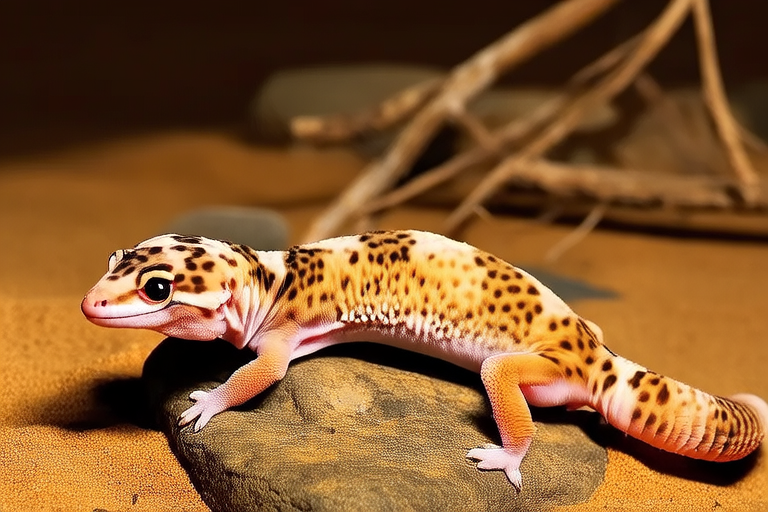Top 10 Fascinating Facts About Leopard Geckos Every Pet Owner Should Know
Leopard geckos, scientifically known as Eublepharis macularius, have become one of the most popular reptiles among pet enthusiasts. Their docile nature, vibrant colors, and relatively easy care requirements make them an ideal choice for beginners and seasoned reptile keepers alike. Here are ten fascinating facts about these captivating creatures that every leopard gecko owner should know.
1. Evolutionary Adaptations
Leopard geckos have evolved over millions of years to thrive in the harsh desert environments of their native habitats in Afghanistan, Pakistan, and parts of India. One of their most remarkable adaptations is their ability to store fat reserves in their tails, which they can live off when food is scarce. This adaptation is crucial for survival in arid regions where resources may be limited. Additionally, leopard geckos have developed specialized skin that helps them retain moisture, preventing dehydration in dry climates.
2. Unique Physical Characteristics
Leopard geckos possess several unique physical traits that set them apart from other lizards. Unlike many other gecko species, they have moveable eyelids, allowing them to blink and maintain eye health. They also have small claws instead of adhesive toe pads, making them adept at climbing rocks and branches but less skilled at scaling smooth surfaces. Another intriguing feature is their ability to shed their entire skin in one piece, similar to how snakes molt. This process is essential for growth and maintaining healthy skin.
3. Color Morphs and Patterns
The variety of color morphs and patterns available in leopard geckos is staggering, thanks to selective breeding by reptile hobbyists. From high-contrast albino varieties to low-contrast jungle patterns, there’s a wide range of appearances to choose from. Some of the most sought-after morphs include blizzards, snows, and patternless geckos. Understanding genetics plays a significant role in predicting the outcome of breeding pairs, offering endless possibilities for creating unique and beautiful animals.
4. Nocturnal Behavior
Leopard geckos are strictly nocturnal, meaning they are active during the night and rest during the day. This behavior is an adaptation to their natural habitat, where daytime temperatures can be scorching hot. As nocturnal creatures, they rely on thermoregulation to maintain optimal body temperature. Providing a thermal gradient within their enclosure, with a warm end and a cooler end, allows them to regulate their body temperature effectively. It’s important for owners to mimic this environment by keeping lights off during the night and ensuring proper heating.
5. Feeding Habits
Leopard geckos are insectivores, primarily feeding on crickets, mealworms, and wax worms. A balanced diet is crucial for their health, so it’s recommended to offer a variety of prey items. Gut loading, the practice of feeding insects nutritious foods before offering them to your gecko, enhances the nutritional value of each meal. Additionally, calcium and vitamin D3 supplementation are necessary to prevent metabolic bone disease, a common issue in captive reptiles. Dusting insects with these supplements ensures that your gecko receives the necessary nutrients for strong bones and overall well-being.
6. Social Behavior
Despite being solitary animals in the wild, leopard geckos can coexist peacefully in captivity under certain conditions. However, housing multiple geckos requires careful consideration. Males should never be housed together due to territorial aggression, while females can sometimes share enclosures if introduced early enough. It’s essential to provide ample space, hiding spots, and food sources to reduce competition and stress. Monitoring interactions closely is key to maintaining harmony within a multi-animal setup.
7. Breeding and Reproduction
Breeding leopard geckos involves creating specific environmental conditions to stimulate reproductive behavior. Temperature cycling, where the ambient temperature is gradually lowered during winter months and then raised again in spring, mimics seasonal changes in their natural habitat. This cycle encourages breeding activity. Once gravid (carrying eggs), female leopard geckos will lay clutches of two eggs every few weeks until they’ve exhausted their egg supply. Incubation periods vary depending on temperature, typically ranging from 45 to 60 days. Proper incubation techniques are vital for successful hatching.
8. Health Concerns and Common Issues
Like any pet, leopard geckos can face various health challenges. Metabolic bone disease (MBD) caused by calcium deficiency is one of the most prevalent issues. Symptoms include lethargy, swollen limbs, and difficulty moving. Regular veterinary check-ups, along with proper husbandry practices, help prevent and manage such conditions. Other potential problems include impaction, respiratory infections, and parasitic infestations. Early detection and treatment are crucial for maintaining your gecko’s health.
9. Longevity and Lifespan
Leopard geckos are known for their longevity, often living up to 20 years or more with proper care. Factors influencing lifespan include genetics, diet, and environmental conditions. Providing a stimulating yet safe environment, a nutritious diet, and regular veterinary care contribute significantly to extending their lives. Long-term owners often form deep bonds with their pets, enjoying decades of companionship.
10. Legal Considerations and Conservation Efforts
While leopard geckos are widely available as pets, it’s important to consider legal restrictions and conservation efforts. In some countries, certain color morphs or wild-caught specimens may be subject to import/export regulations. Supporting reputable breeders who adhere to ethical standards helps preserve wild populations and promotes responsible pet ownership. Additionally, participating in community conservation initiatives raises awareness about the importance of protecting native habitats and wildlife.
In conclusion, leopard geckos are fascinating creatures with rich evolutionary histories and unique characteristics. By understanding their needs and providing appropriate care, owners can ensure that these delightful pets lead happy, healthy lives. Whether you’re a first-time keeper or an experienced enthusiast, learning more about leopard geckos enriches the experience of sharing your home with these charming reptiles.
